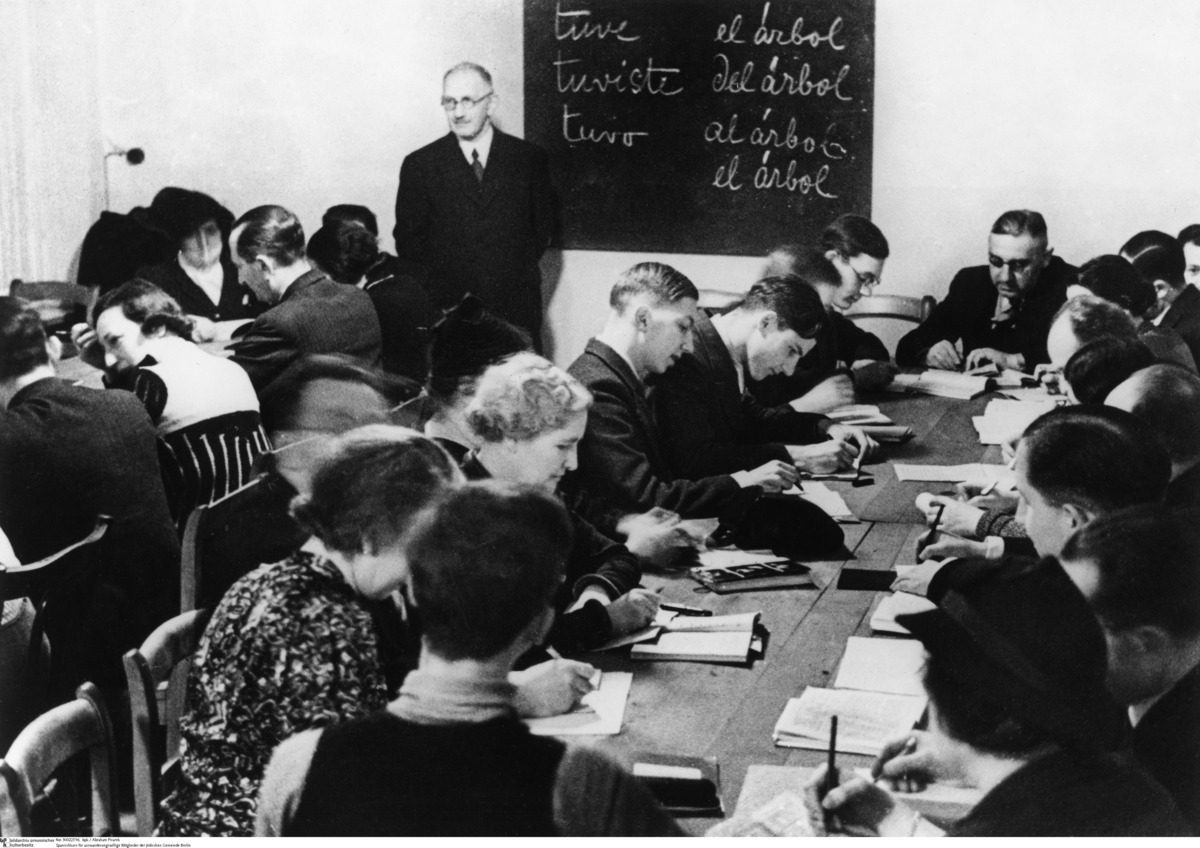Abstract
Although German Jews were subjected to arbitrary violence, burdens, and humiliations, and although their economic situation grew steadily worse, many saw emigration as a difficult step to take. It was not only emotional ties that kept them from leaving Germany. Jews willing to emigrate had to overcome a multitude of logistical, bureaucratic, and legal hurdles. Not least among these challenges were immigration restrictions imposed by destination countries. These restrictions often took an applicant’s age, profession, and financial situation into consideration. An estimated 270,000 to 300,000 Jews were able to leave Germany before the official ban on Jewish emigration in October 1941. This 1935 photograph shows an evening Spanish class for Berlin Jews who wanted to emigrate to South America. The class was held at the Jewish School on Große Hamburger Straße, part of Berlin's historically Jewish neighborhood.

